Vipers are one of the most venomous snakes in the world. There are about 200 species, and some of the deadliest vipers are from both Old World vipers and pit vipers groups. Vipers have a pair of long and hollow venom-injecting fangs that fold back in the mouth when not in use. You can recognize them by their broad head and stout body along with dark patterns on a lighter background. We are going to talk about some of the deadliest vipers today, so let’s find out.
1Asp Viper
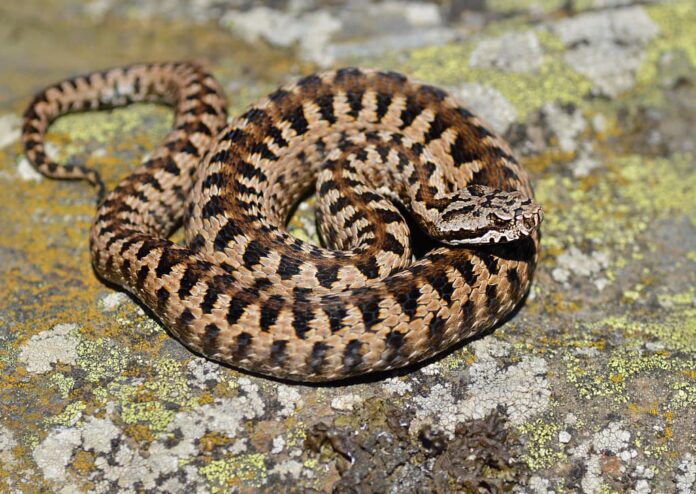
With the fame of having potent venom that was used as means of execution since ancient times, asp vipers are quite deadly. If we talk about the bite, it is very painful and severe if not treated appropriately and on time. In fact, asp vipers are responsible for most of the snakebite cases in Italy back in the 19th century. Upon each bite, the venom causes rapidly acute pain that spreads around the body causing hemorrhagic necrosis within a few hours. Then, the victims will experience severely impaired vision, renal failure, and eventually death. Because some species inhabit hills, low mountains, lower plains, and vegetated areas, encountering one is not uncommon.
2Bush Viper
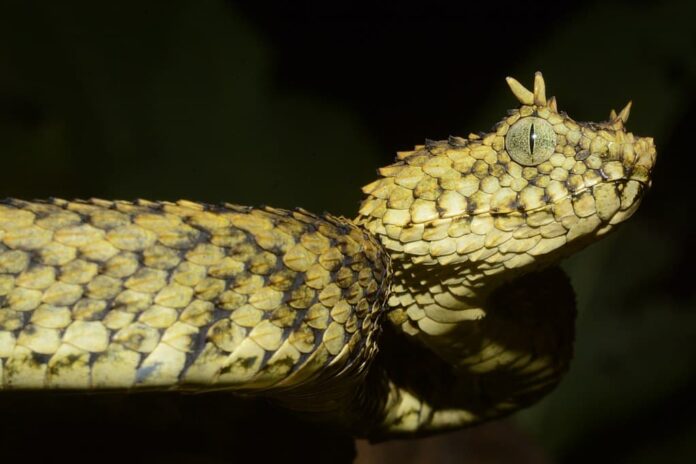
Beauty that comes with deadly venom makes bush vipers one of the most dangerous snakes in the world. Bush vipers look so unreal to be true because their incredible detail is absolutely stunning. This type of viper is an ambush predator, so it lays in and waits until its prey gets close. When attack, it strikes quickly to inject venom to subdue its prey. As nocturnal hunters, bush vipers are more active at night. During the day, these excellent climbers stay up in the trees to bask in the sun.
As for their venom, it is strong enough to induce severe bleeding of the victim’s internal organs. A bite from it is potentially lethal for humans, and the side effects are blistering, bruising, fevers, swelling, and death. Also, the amount and strength of a bush viper’s venom depend on its age, altitude, geographic region, or even weather. The good thing is that they live in remote habitats which are far away from humans.
3Fer De Lance
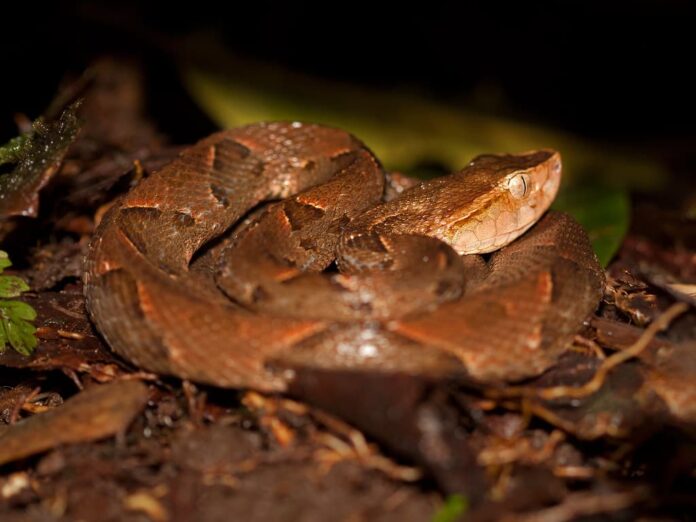
A viper with such an interesting name and potent venom like fer-de-lance is the species that you should know about. Hikers are the people who have a high chance of coming across one of these deadliest vipers. The unique thing about their nature is that they are both nervous and shy but unpredictable at the same time. They might try to escape or stand their ground, and they will also strike if you corner them or accidentally step on them.
When threatened, a fer-de-lance will display aggressiveness by enlarging its body and vibrating its tail. One thing to remember is that a fer-de-lance can strike repeatedly, and it produces a lot of venom in each bite. The survival from their bite depends on the biting areas and the amount of venom injected. Because of the anticoagulant in the venom, the bite can cause hemorrhaging and dead tissues. If the venom does not kill you, it still causes severe gangrene which results in amputations.
4Gaboon Viper
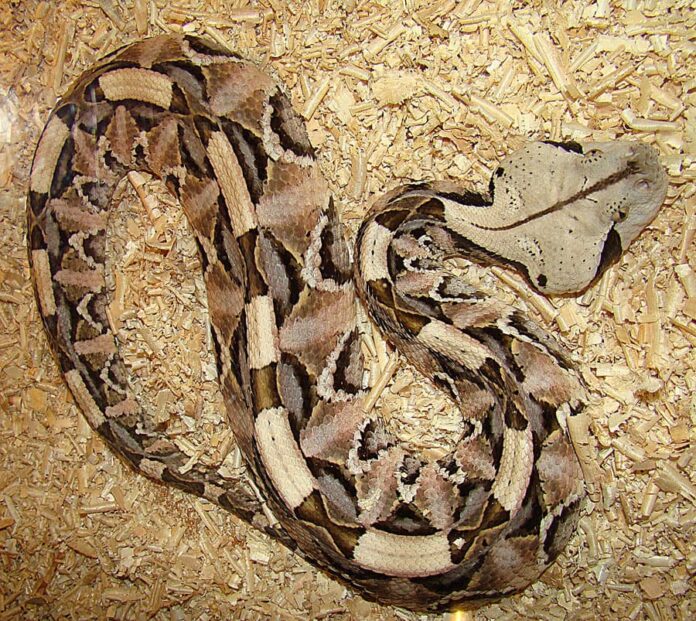
When it comes to the largest vipers in the family, gaboon vipers have to be on the list. These vipers not only have long lengths but also have the longest fangs of any venomous snake. This is the reason why they are among the deadliest vipers in the world. These snakes are capable of producing not only a great quantity of venom but also strong venom. The only good thing about them is that the gaboon vipers are docile, and they tend to avoid people. When threatened, it will hiss as a sign to let the intruders know to stay away.
Another interesting thing about gaboon vipers is their beautiful and unique appearance. Their coloration includes black, dark brown, light brown, pink, purple, yellow, or even silver. As for their eyes, the color can be cream, orange, yellow, or silvery color. Since they are among the largest and heaviest vipers in Africa, coming across one of them is not a pleasant moment.
Fun Fact: Gaboon vipers are viviparous which means they give birth to live young instead of laying eggs.
5Large Palearctic Viper
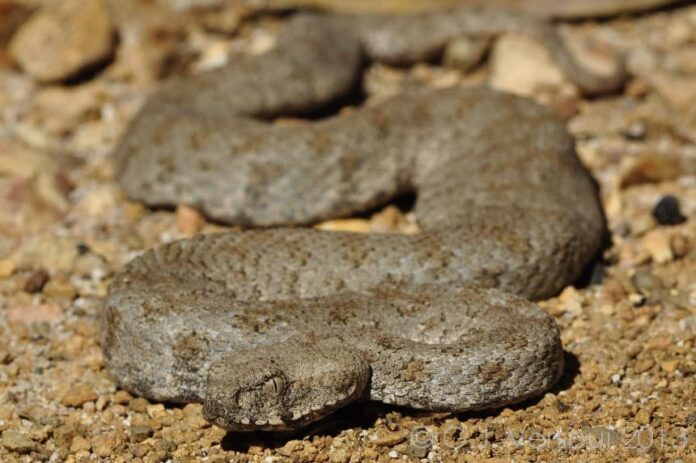
Nothing is worst than a venomous snake with a bad temper, and you are looking right at one. Large Palearctic vipers are dangerous because they are ill-tempered and they inject a lot of venom in each bite. This is why they are responsible for a number of bites in North Africa and Western Asia every year. These vipers prefer to live in dry and stony habitats, but some also live in fields, gardens, and meadows. Probably the good thing about them though is they will hiss and coil their body into a taut S-shape as a warning. In case you don’t back off, these moody vipers will strike.
6Long-Nose Viper
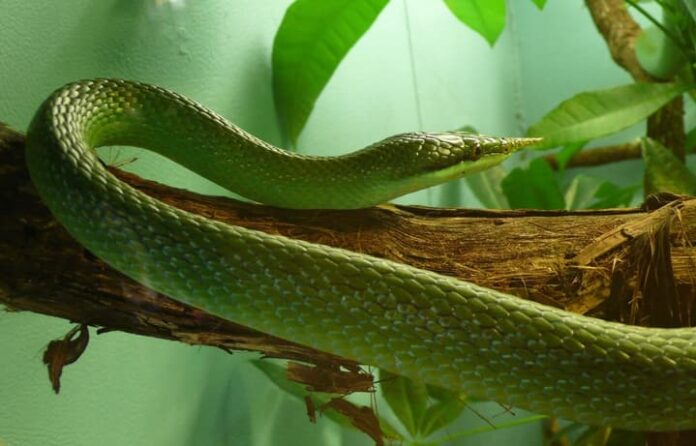
Got their name from the elongated horn at the tip of the snout, these are among the most venomous snakes. As a matter of fact, it is the most dangerous venomous snakes in Europe due to its potent venom. These vipers feed on frogs, lizards, small birds and rodents, and invertebrates like centipedes. The interesting thing about them is that they hibernate in winter for between 2 to 6 months, depending on environmental conditions.
There are several species of this viper, and the toxicity of their venom also varies. These venomous vipers are non-aggressive and shy, so they tend to avoid humans. However, they are not afraid to strike if you bother or provoke them. The dangerous thing is that it is possible for them to deliver more than one bite in a single attack. After the bite(s), the victims will experience symptoms such as discoloration, pain, swelling, and more.
7Puff Adder
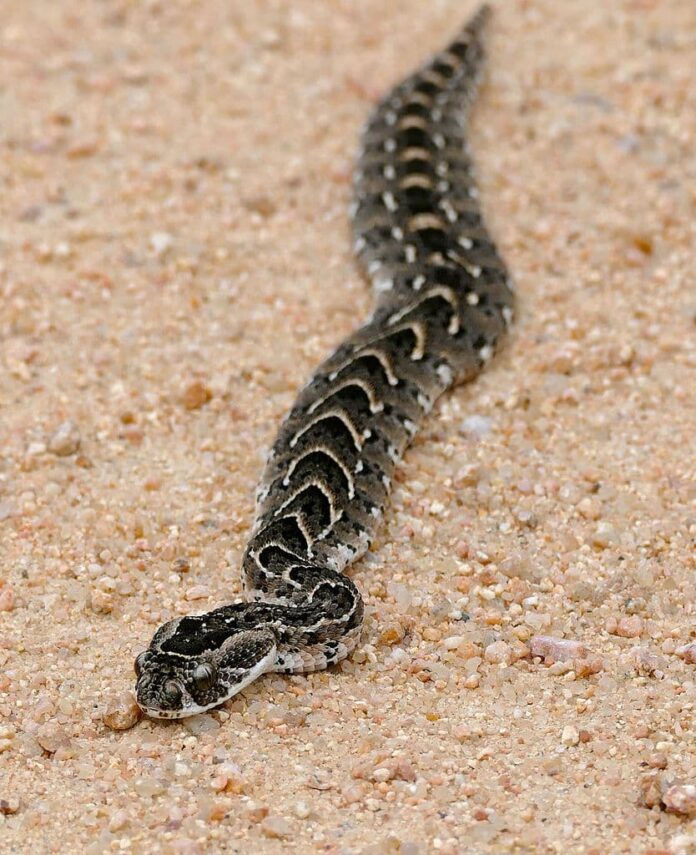
Gets the name from the fact that it puffs up its body when senses danger, puff adder is extremely venomous. Along with body inflating, this viper species also make hissing sound to ward off the aggressors. Puff adders are long and thick, and they do not attack unless provoked. Because many of them also share the same living locations as humans, bites from them are very common. In fact, puff adders are responsible for the most bites and human deaths in Africa more than any other snakes.
These dangerous vipers have hinged front fangs, their fangs are actually very large and long. So a hinge helps them to fold the fangs out of the way when not in use. But when in use, those fangs deliver a painful bite with deep penetration with great venom injection. One bite can result in severe swelling along with necrosis (cell destruction). The victims will recover fine if they seek for medication on time, but fatality is also possible.
8Rattlesnake
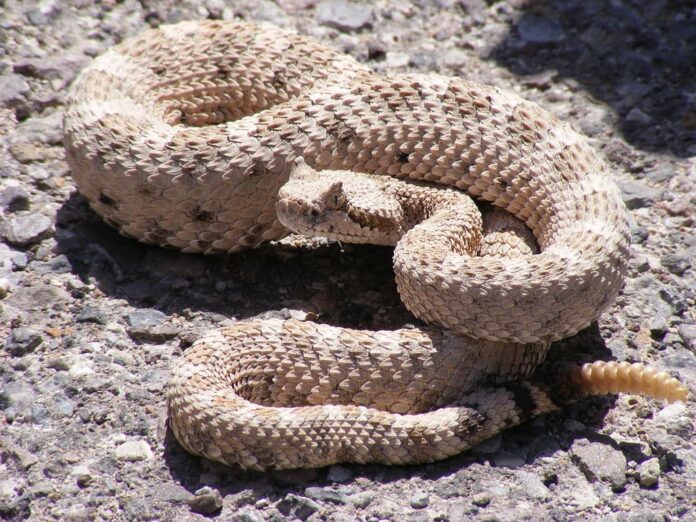
These New World vipers are one of the most common snakes that many people know. Thanks to their special “rattle” feature, it is also very easy to recognize one in the wild as well. Rattlesnakes are not aggressive, and they will not attack humans if unprovoked. As a matter of fact, these venomous vipers are quite shy and timid. They make rattling noises to warn intruders to back off or to distract prey. Although there are antidotes to their venom, it is still a good thing to know about how venomous they can be.
First of all, a bite from a rattlesnake is very painful. The longer their length is, the longer their fangs are which also means the more dangerous and painful the bites get. The venom of most rattlesnake species is extremely potent because it contains hemotoxins. So with each bite, the symptoms can range from temporary or permanent muscle and tissue damage. Blurry vision, extreme pain, and internal bleeding are also very common, but fatality is rare if treated on time.
9Russell’s Viper
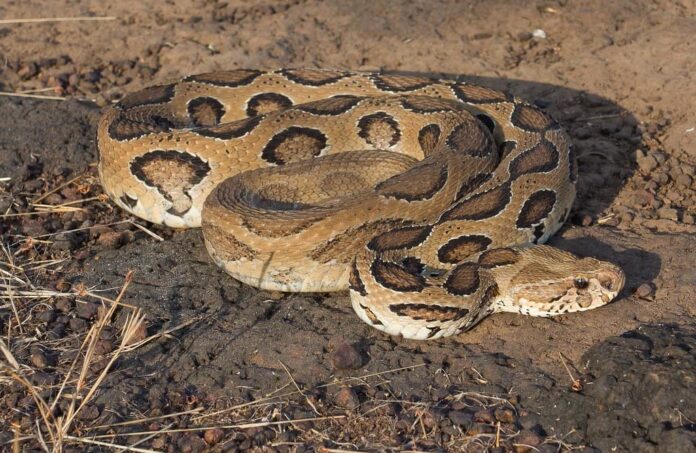
Also goes by the name of Daboia, this serpent is the most dangerous viper in Asia. Russell’s vipers are terrestrial but they tend to avoid living in thick jungles or forests. These snakes can be found in both rural and urban areas close to people where rodents are abundant. This is why Russell’s vipers are responsible for the most snakebite deaths and incidents throughout countries in Asia.
The Russell’s vipers move slowly when they go hunting at night. However, these nocturnal snakes can be very aggressive when threatened. They would form a series of S-loops then raise the first third of the body and make the loudest hissing sound of any snake. With the ability to raise their body and strike, their fast bite is always accurate with a large amount of venom injection. The bite could be a snap if you’re lucky, but sometimes they do hang on for some seconds.
The venom of this viper can clog the victim’s blood which leads to nonstop and strong bleeding. Followed by that are the symptoms such as neck muscles paralysis, permanent renal damage, organ (especially kidneys) failure, and death. A bite from Russell’s viper is very deadly, and people usually encounter them on roadways and along trails. Should you meet one, it is always a better idea to keep your distance and stay away.
10Saw-Scaled Viper
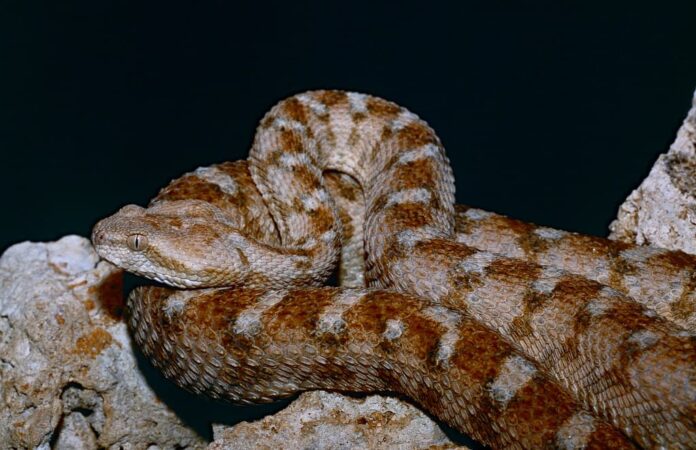
If we talk about the deadliest vipers in the world, saw-scaled vipers are always in the discussion. Look nowhere near intimidating due to their small size, people wouldn’t fear these vipers if they don’t know them. For those who know saw-scaled vipers, they sure do know how to maintain the distance. Despite the size, saw-scaled vipers are very aggressive and defensive. The dangerous part is not their nature but the power of their venom.
Because they are quite small, these vipers can strike fast. Before they do, they also give intruders the signs to stay away. A saw-scaled viper will move slowly with its body looped into S-shaped folds. This is when their scales are rubbed against each other which produces a hissing sound. If you don’t move away, they do not hesitate to strike knowing the ability and how deadly their venom is.
Simply put, these vipers have flesh-rotten venom that can cause a series of excruciating pain after the bite. Within minutes, the victims will start to feel the local pain and swelling. Once the venom starts spreading, they will also feel that too. The dangerous symptoms if not treated on time are acute kidney failure, blood clotting, internal bleeding, and eventually death. Saw-scaled vipers are extremely deadly because their venom not only kill but also destroys. So even if people survived their bites, there is a high possibility of losing fingers, toes, or entire limbs.
Related Post: Dangerous Sea Snakes



